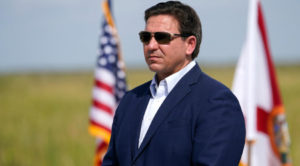From a conservative perspective, President Joe Biden’s ambitious goal of developing 30 gigawatts of offshore wind by 2030 appears to be facing significant challenges that could threaten the viability of the industry in the near term. While the administration has emphasized renewable energy as a central part of its agenda, the offshore wind industry in the United States is grappling with soaring costs, supply chain disruptions, and regulatory hurdles. This scenario is seen by conservatives as a setback that was a long time in the making due to years of underinvestment in the offshore wind supply chain and delays in adjusting power purchase agreements to reflect the actual costs.
The escalating costs of materials, driven by high demand worldwide and limited supply, have posed a major hurdle for offshore wind developers. Conservative analysts point out that addressing the massive investments needed to meet offshore wind demand would require governments, with the exception of China, to invest approximately $100 billion each in offshore wind supply chains by 2026 to meet their 2030 offshore wind targets. These financial constraints and inflation concerns are creating serious headwinds for the industry.
While the Biden administration has allocated billions of dollars in federal funding for offshore wind through the Inflation Reduction Act, conservative voices argue that this funding is insufficient to support the industry’s massive build-out. Major developers are calling for more federal support to cover the higher costs and qualify for certain tax credits offered under the Act. This plea for federal action is seen as a potential lifeline for the industry.
Conservatives note that many planned offshore power projects have been canceled or amended by major developers due to the high costs and their inability to renegotiate power purchase agreements that accurately reflect construction costs. Since July, the industry has seen a combined 2.4 GW of planned offshore power capacity scrapped due to problems with underpriced contracts. States are under pressure to renegotiate these contracts to account for the higher costs, which could lead to increased prices for consumers if federal intervention is not forthcoming.
The rejection of requests to raise project costs by regulators in New York is considered a significant blow by conservatives, as it could jeopardize the state’s planned offshore capacity and hinder its goal of reaching 70% renewable power generation by 2030. It is now seen as “inevitable” that existing power purchase agreements will need to be renegotiated with states to reflect the higher costs for offshore projects to move forward.
While some see the recent setbacks as an opportunity for the U.S. to reassess and retool its approach to offshore wind, conservatives acknowledge that it may take longer than the 2030 target envisioned by the Biden administration to achieve the 30 GW goal. They also point out that offshore developers have faced local opposition from fishermen, marine life activists, and lawmakers in some states. This opposition adds to the challenges facing the industry, including regulatory hurdles and concerns about the impact on marine life and the local economy.
In summary, from a conservative perspective, the offshore wind industry in the United States is confronting a perfect storm of challenges, including rising costs, limited funding, and the need for federal support to sustain its growth. While the Biden administration’s renewable energy goals are ambitious, there are serious financial, regulatory, and local obstacles to overcome in achieving them.





